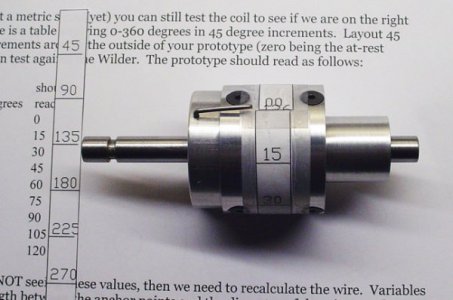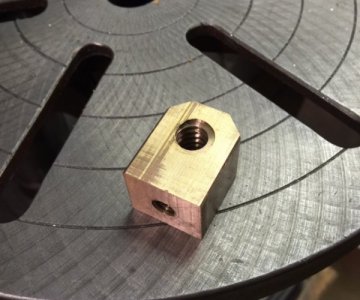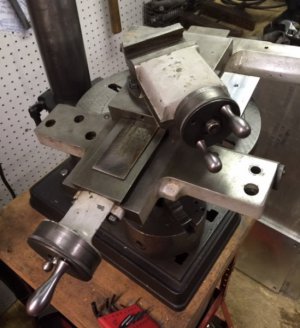A friend of mine has a Rockwell 11" lathe. The cross feed nut is worn out and a new one can't be found. I never cut an acme thread before , but what the heck, how much harder can it be? .....yea .. right

. I milled a block out of a round piece of bearing bronze I had lying around. The screw is 1/2-10 left hand acme. I drilled a .375 hole for the minor diameter and then proceeded to try and make a threading tool since they are $100 on eBay for an acme boring bar!!!!!! Spent two hours grinding a nice tool on a 3/16 HSS bit and could not get it to silver solder on the end of a bar. I ended up with a mess.

. I got a piece of 3/8 HSS lathe bit and hogged a tool out of it. Took a couple hours. It is ugly but the business end is right and that is what matters.
View attachment 126687 View attachment 126688
These are pics of the bit. Told you it was ugly.
View attachment 126686 This is the finished nut block. This is at least a class 3 fit . I can turn it with my fingers but it is stiff. I left it that way because this is a new piece of acme screw and I'm sure his is worn in the middle. I am hoping this will reduce the backlash from screw wear. I left the nut in the lathe until I try his screw in it , just in case I have to take another cut in it. Now I have to try to figure out the height of the nut to fit in the saddle and line up with the screw. I don't yet know how I will determine that. If I cut too much it will require shims to make it work. From start to finish this project has taken all day to get to this point.





